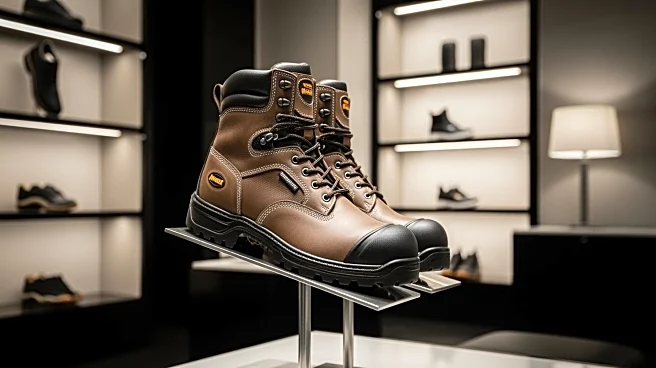What's Happening?
Adam Beck, CEO of Beck’s Shoes, a California-based retail chain, has highlighted the evolving challenges in selling work boots. With more Gen Z and female workers entering trades, the company is adapting
to a changing customer base. Beck notes that the work industrial category is shifting from utility to lifestyle, requiring a broader range of styles to meet diverse consumer demands. The company is investing in athletic-inspired safety footwear and expanding its brand offerings, including a tribute boot made in the USA. Beck’s Shoes is also leveraging omni-channel strategies to enhance customer experience and compete with e-commerce.
Why It's Important?
The shift in consumer demographics and preferences in the work boot market reflects broader changes in the workforce, with more women and younger individuals entering trades. This evolution presents opportunities for retailers to innovate and diversify their product offerings. Beck’s Shoes' focus on omni-channel strategies and brand development highlights the importance of adapting to consumer trends and leveraging technology to enhance competitiveness. The company's approach may influence other retailers in the industry to adopt similar strategies, impacting the business landscape.
What's Next?
Beck’s Shoes plans to continue expanding its brand offerings and omni-channel strategies to meet the evolving demands of its customers. The company is set to launch the Bill Beck Boot, a made-in-USA product, and is exploring minority interests in new brand ventures. These initiatives may strengthen its market position and attract a broader customer base. The ongoing competition with e-commerce and direct-to-consumer models will likely drive further innovation and strategic partnerships within the industry.
Beyond the Headlines
The challenges faced by Beck’s Shoes highlight the broader implications of changing workforce demographics on retail strategies. The emphasis on lifestyle products in traditionally utilitarian categories reflects cultural shifts in consumer behavior. Additionally, the focus on made-in-USA products underscores the growing importance of domestic manufacturing and its potential impact on local economies.












